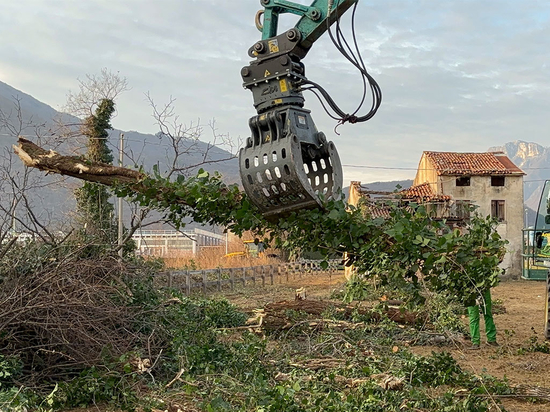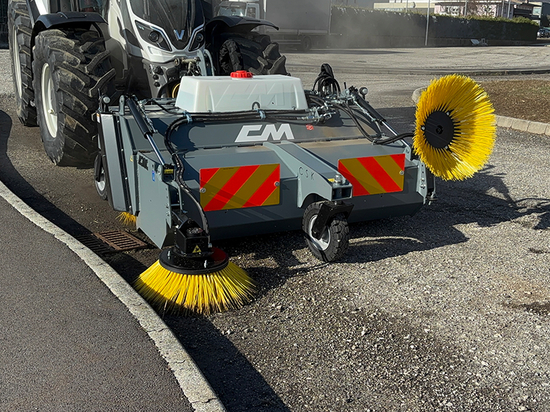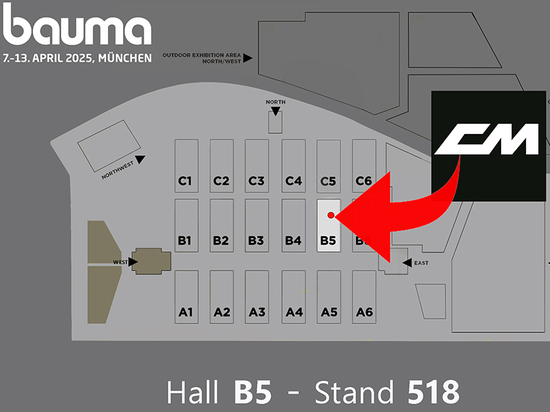
#Farm Machinery & Equipment
WHICH SCREENING BUCKET SHOULD YOU CHOOSE?
CM SCREENING BUCKETS: THE CHOICE BETWEEN SCREENING BUCKET WITH ROTATING BASKET AND SCREENING BUCKET WITH ROTORS
CM's range of screening buckets includes two types: the CBR series, characterized by a basket rotating in both directions, and the CDS series, equipped with rotors.
The question is often asked: which is the best between the two? The answer to this question is "It depends!". On which material one should principally screen and whether it is wet or dry.
Let us make a guide with some of the materials to be screened in mind.
Sand: To separate sand from stones or various impurities, we always recommend the CBR screening bucket. With the correct choice of basket hole, fine, dry sand comes out of the screen hole, while all larger material is captured inside the basket and then discharged into a separate place.
Soil/topsoil: When the soil is moist, the bucket with rotors is always recommended for high output, capable of working even with moist soil. Also, in the case of clods, the CDS model is the choice, as the rotors can 'crush' hard clods, making them easier to screen.
For dry soil but full of impurities such as stones and branches, the CBR screening bucket is recommended. Branches and impurities remain inside the rotary basket, while only clean soil comes out of the basket holes.
Screening of aggregates ready for crushing: In this case, the CBR series screening bucket is recommended. The rotating basket allows the aggregates to be captured inside the basket, cleaning the material to be crushed.
Scraps: For highly abrasive materials such as scrap metal, the CBR screening bucket is best suited. Thanks to its ability to handle abrasive materials, the CBR screening bucket can maintain high performance and productivity even in difficult working conditions, optimizing production time and costs.
Gravel: if gravel has to be separated into various sizes, the choice falls on the CBR series, which is the ideal solution for a uniformly sized end product. The rotating basket allows the gravel to be captured and separated, ensuring that only material of the desired size passes through the holes in the basket. In this way, it is possible to obtain a gravel of uniform size adapted to the specific requirements of the project.
In the case of gravel mixed with soil and/or other impurities, CDS is the best choice. The rotors separate the gravel from the rest of the unwanted material, achieving the desired result.
Biomass: the CBR series is ideal for screening composting organic waste. The rotating basket of the CBR captures the biomass and separates it from any impurities such as plastic or metal. This results in a better-quality compost, free of contaminants, suitable for use in agriculture and horticulture.
The CDS series is preferable when dealing with more compact or larger biomass such as wood shavings or vegetable waste. In this case, the rotors can crush larger organic materials, facilitating the screening process and helping to reduce the size of the debris.
Recyclable materials: The CBR series can be used for separating recyclable materials such as paper, plastic, glass, and metal. The CBR's rotating basket captures the desired materials and separates them from any contaminants, contributing to a clean, quality end product.
The CDS rotors can help crush coarser materials and prepare them for screening, helping to improve the efficiency of the separation process.
In conclusion, the choice between the two types depends on the characteristics of the material to be screened and the specific requirements of the job. Both offer unique advantages and are designed to meet a wide range of applications in the soil and materials handling industry.





